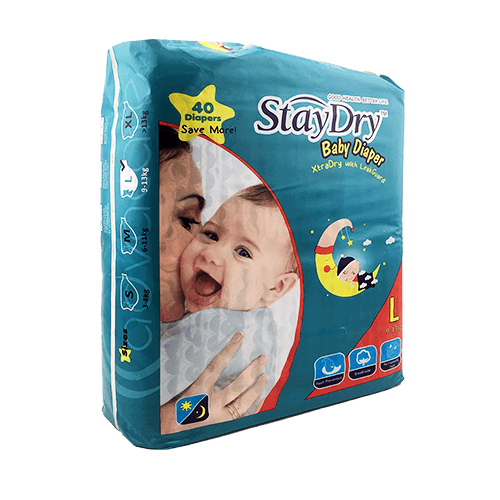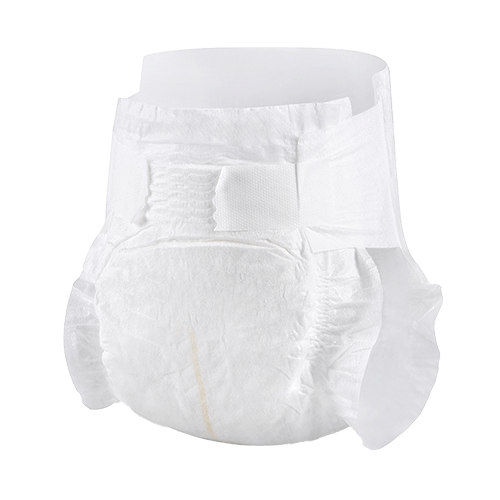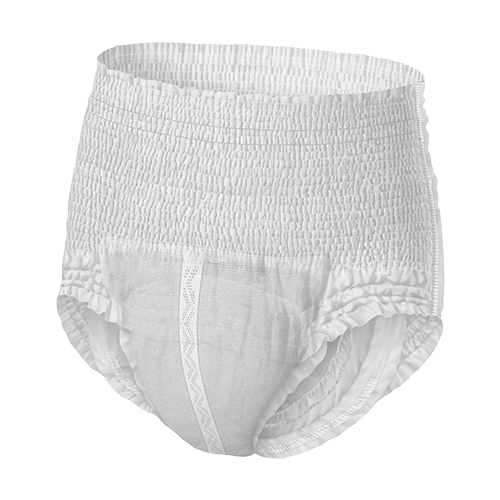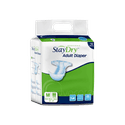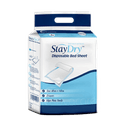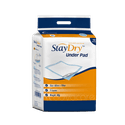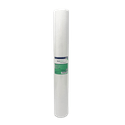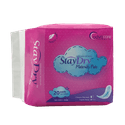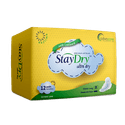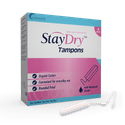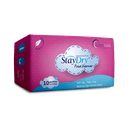Baby Diapers
Type
Absorbency
Size
Packaging
What are Baby Diapers?
Baby Diapers are absorbent garments worn by infants and young children to contain and manage their urine or fecal waste. They come in sizes S to XL and low, medium, and high absorbency capacities. These disposable diapers feature elastic leg cuffs, resealable tabs, and moisture-wicking layers to for a comfortable fit.
Baby diapers should be changed regularly to maintain hygiene and prevent irritation or rashes. The frequency of changing depends on the age of the baby, the absorbency level of the diaper, and the amount of urine or fecal waste produced. Newborns typically require more frequent changes than older babies, and high-absorbency diapers can last longer between changes.
AdvaCare Pharma is a renowned manufacturer and distributor of Baby Diapers that are produced in certified facilities located in India, China, and the USA. The facilities undergo regular inspections to ensure that they comply with healthcare standards on quality and safety, ensuring the trustworthiness of our products.
Product Specifications
Standard
Pull-Ups
EconoDry (Low Absorbency)
EconoDry (Low Absorbency) baby diapers are the most basic model in the range. They come in sizes S to XL, suitable for babies requiring minimal absorbency, typically weighing between 3kg to over 13kg. These diapers feature a plastic (PE) bottom layer and leakguards to prevent leaks and ensure a snug fit. They also come with double re-adhesive PP fastening tape for easy adjustments and secure closure. With their affordable price and basic features, EconoDry diapers are a practical choice for parents who prioritize simplicity and cost-effectiveness.
- Size S: 390x280mm; Baby Weight: 3-8kg; Weight/SAP: 21g/4g; Absorbency: ≥ 320ml
- Size M: 450x320mm; Baby Weight: 6-11kg; Weight/SAP: 25g/5g; Absorbency: ≥ 400ml
- Size L: 500x320mm; Baby Weight: 9-13kg; Weight/SAP: 29g/6g; Absorbency: ≥ 480ml
- Size XL: 540x320mm; Baby Weight: >13kg; Weight/SAP: 33g/7g; Absorbency: ≥ 560ml
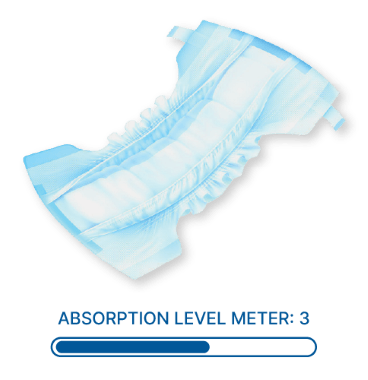
XtraDry (Medium Absorbency)
XtraDry (Medium Absorbency) baby diapers are designed with features that prioritize both comfort and functionality. With a secure Velcro fastening tape and dual leakguards, these diapers provide a snug fit and excellent leakage protection. The breathable, cloth-like bottom layer ensures optimal airflow, keeping the baby's delicate skin dry and healthy. The elastic waist ensures a comfortable and secure fit for active little ones.
- Size S: 390x280mm; Baby Weight: 3-8kg; Weight/SAP: 23g/6g; Absorbency: ≥ 480ml
- Size M: 450x320mm; Baby Weight: 6-11kg; Weight/SAP: 27g/7g; Absorbency: ≥ 560ml
- Size L: 500x320mm; Baby Weight: 9-13kg; Weight/SAP: 33g/8g; Absorbency: ≥ 640ml
- Size XL: 540x320mm; Baby Weight: >13kg; Weight/SAP: 37g/9g; Absorbency: ≥ 720ml
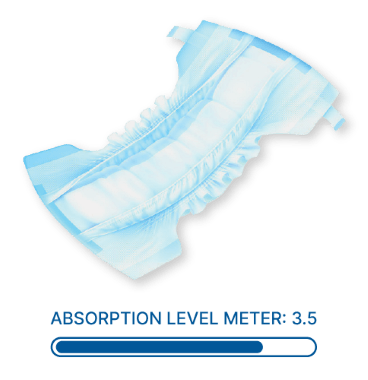
UltraDry (High Absorbency)
UltraDry (High Absorbency) baby diapers are designed for high absorbency needs. Available in sizes S to XL, these diapers come with a Velcro fastening tape that ensures a comfortable and secure fit. They also feature a dual leakguard system, which prevents leaks from the sides, and an absorption diversion layer that quickly absorbs and distributes moisture evenly. The breathable cloth-like bottom layer ensures comfort for your baby's sensitive skin, and the elastic waistband provides a snug fit.
- Size S: 390x280mm; Baby Weight: 3-8kg; Weight/SAP: 20g/6g; Absorbency: ≥ 600ml
- Size M: 450x320mm; Baby Weight: 6-11kg; Weight/SAP: 22g/7g; Absorbency: ≥ 700ml
- Size L: 500x320mm; Baby Weight: 9-13kg; Weight/SAP: 24g/8g; Absorbency: ≥ 800ml
- Size XL: 540x320mm; Baby Weight: >13kg; Weight/SAP: 26g/9g; Absorbency: ≥ 900ml
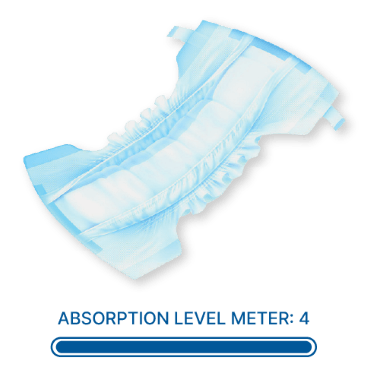
EconoDry Pull-Ups (Low Absorbency)
EconoDry Pull-Ups (Low Absorbency) are designed for young children who are starting to potty train. These low absorbency diapers are available in sizes S to XL and can hold up to 560ml of liquid. They feature a plastic (PE) bottom layer with leak guards and a double re-adhesive PP fastening tape to provide a secure fit. EconoDry Pull-Ups are the most basic model of the range and offer an affordable option for parents who are looking for a reliable diaper during their child's potty training journey.
- Size S: Baby Weight: 3-6kg; Weight/SAP: 21g/4g; Absorbency: ≥ 320ml
- Size M: Baby Weight: 5-12kg; Weight/SAP: 25g/5g; Absorbency: ≥ 400ml
- Size L: Baby Weight: 9-18kg; Weight/SAP: 29g/6g; Absorbency: ≥ 480ml
- Size XL: Baby Weight: 11-25kg; Weight/SAP: 33g/7g; Absorbency: ≥ 560ml

XtraDry Pull-Ups (Medium Absorbency)
XtraDry Pull-Ups (Medium Absorbency) are designed for babies who need medium absorbency protection. They come in sizes ranging from S to XL, and feature a 360° elastic waistband and double elastic leg cuffs for a secure fit. The breathable bottom layer and extra soft inner lining provide added comfort, while the wetness indicator alerts caregivers when a diaper change is needed. XtraDry Pull-Ups are a reliable and comfortable option for babies on the move.
- Size S: Baby Weight: 3-6kg; Weight/SAP: 26g/4g; Absorbency: ≥ 400ml
- Size M: Baby Weight: 5-12kg; Weight/SAP: 29g/5g; Absorbency: ≥ 480ml
- Size L: Baby Weight: 9-18kg; Weight/SAP: 31g/6g; Absorbency: ≥ 560ml
- Size XL: Baby Weight: 11- 25kg; Weight/SAP: 33g/7g; Absorbency: ≥ 600ml
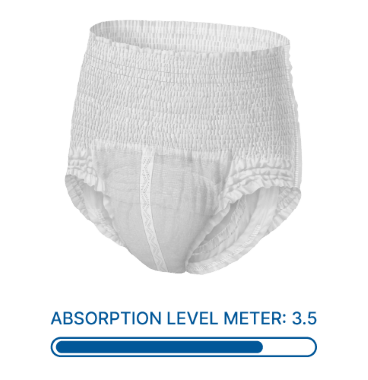
UltraDry Pull-Ups (High Absorbency)
UltraDry Pull-Ups (High Absorbency) are designed for babies and young children who need a high level of absorbency. They feature a 360° elastic waistband and double elastic leg cuffs to provide a secure fit and prevent leaks. The breathable bottom layer helps to keep skin dry and comfortable, and a wetness indicator alerts caregivers when it is time for a diaper change. With different sizes available based on baby's weight, UltraDry Pull-Ups offer reliable protection for babies and toddlers of varying sizes.
- Size S: Baby Weight: 3-6kg; Weight/SAP: 22g/4g; Absorbency: ≥ 400ml
- Size M: Baby Weight: 5-12kg; Weight/SAP: 27g/5g; Absorbency: ≥ 500ml
- Size L: Baby Weight: 9-18kg; Weight/SAP: 32g/6g; Absorbency: ≥ 600ml
- Size XL: Baby Weight: 11- 25kg; Weight/SAP: 37g/7g; Absorbency: ≥ 700ml
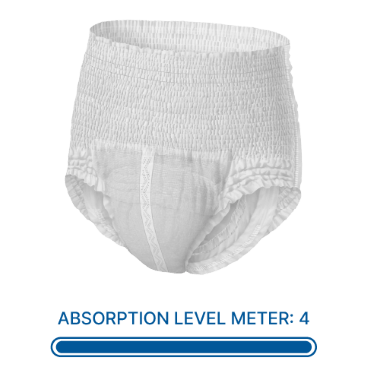
Why are we a leading Baby Diapers manufacturer?
AdvaCare Pharma is dedicated to providing healthcare professionals worldwide with top-quality medical supplies. Among our StayDry™ line of incontinence and urology products, we manufacture Baby Diapers that are produced in our facilities located in China, India, and/or the USA. We guarantee that our range of baby diapers and other incontinence products are manufactured according to ISO quality standards, and assure our partners and distributors of our commitment to quality.
Our goal is to establish a strong and long-term supplier-distributor relationship with our global partners by providing them with cost-effective solutions. With more than 20 years of experience in the industry, we have built a distribution network that spans across 65 markets worldwide. Our focus on delivering quality and market-specific solutions has earned us a reputation as a leading supplier of medical supplies on a global scale.
Uses
How should Baby Diapers be used?
To use a baby diaper, first, lay the baby on their back and slide the diaper underneath them. Bring the front of the diaper up to the baby's belly button and fasten the tabs on each side, making sure it is snug but not too tight. Check to ensure there are no gaps around the legs or waist. Change the diaper as soon as it becomes wet or soiled.
How should Baby Diapers be disposed of?
To dispose of a used diaper, roll it up tightly and tape it closed, then place it in a designated diaper bin or trash can. Do not flush diapers down the toilet as they can cause blockages.
FAQs
How often should Baby Diapers be changed?
It is generally recommended to change a baby's diaper every 2 to 3 hours, or whenever it becomes soiled or wet. Regular diaper changes help prevent discomfort, diaper rash, and skin irritations. Additionally, newborns may require more frequent changes due to their smaller bladder capacity.
How do I know if the diaper is the right size?
Choosing the right diaper size is important for the baby's comfort and leakage prevention. Consider the baby's weight and the diaper product size chart. A well-fitting diaper should have a snug but comfortable fit around the waist and leg openings, with no gaps or tightness.
Can Baby Diapers cause allergies or skin irritations?
While rare, some babies may develop allergies or skin irritations from certain diaper materials or ingredients. If you notice persistent redness, rashes, or discomfort, consult your pediatrician who can help identify the cause and suggest suitable alternatives.
How do you help distributors promote your Baby Diapers?
Benefit from our robust marketing support for distributors, featuring printed materials, merchandising, and digital activations, tailored to empower them in promoting our products, amplifying brand recognition, and optimizing product distribution in their markets.
What categories of healthcare products does your company produce?
AdvaCare Pharma offers an extensive selection of over 500 Class I and Class II medical devices, comprising surgical instruments, diagnostic equipment, medical consumables, wound care products, and incontinence devices. Our products cater to hospitals, clinics, pharmacies, and healthcare facilities.

You might be interested in...
Why AdvaCare Pharma?
As an industry leader, we are aware of our responsibility to provide affordable and sustainable solutions to improve healthcare worldwide.
